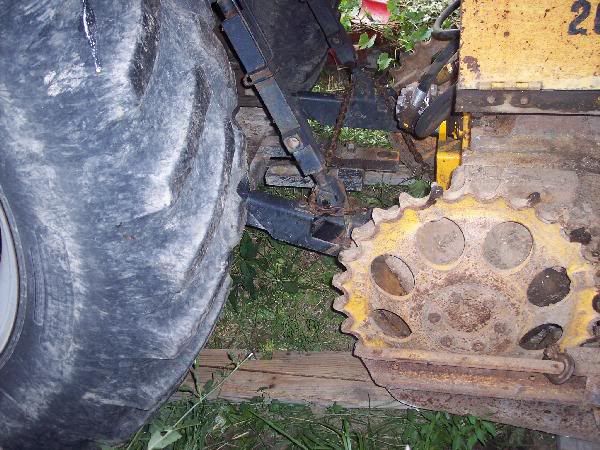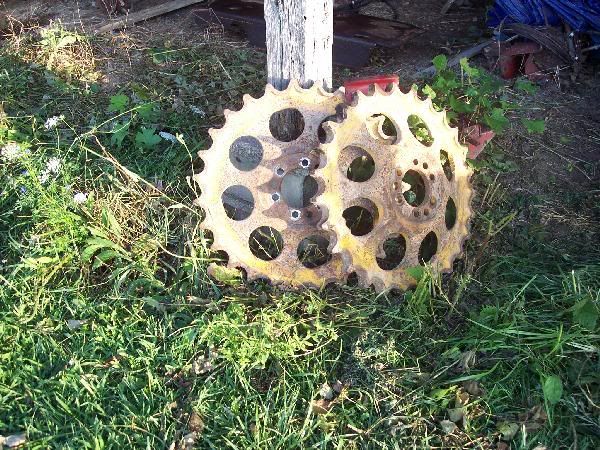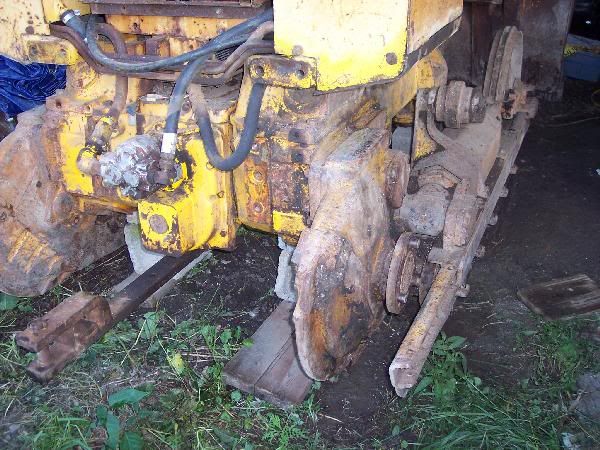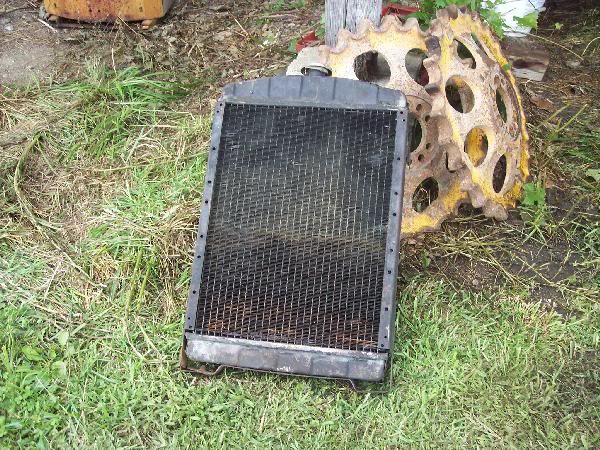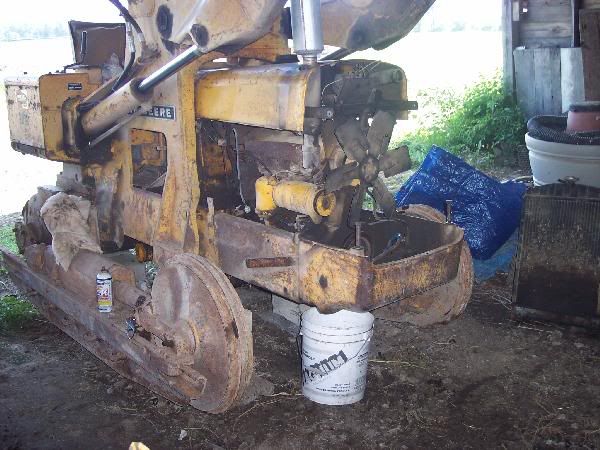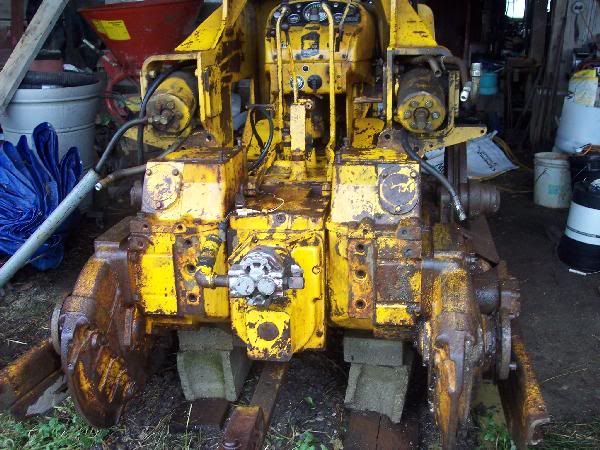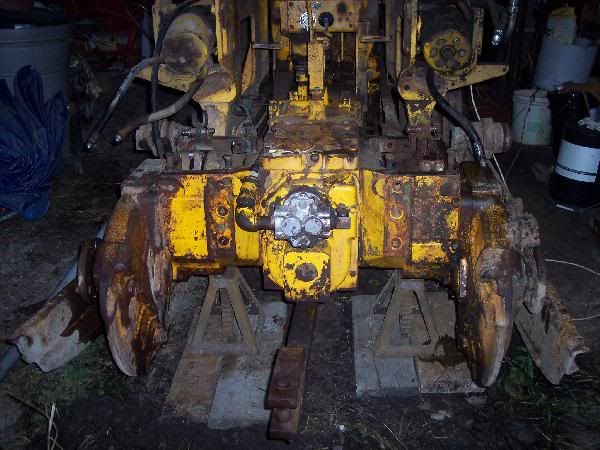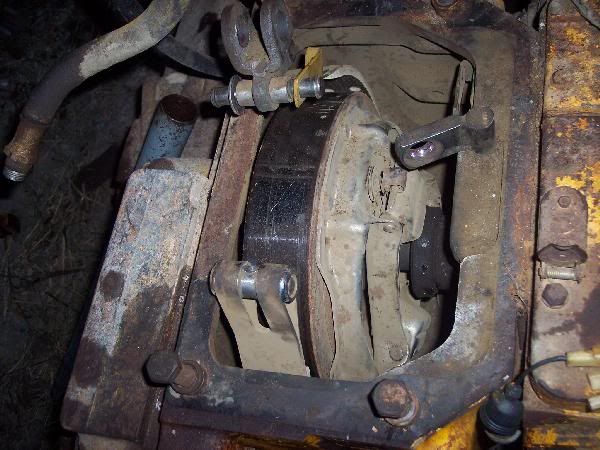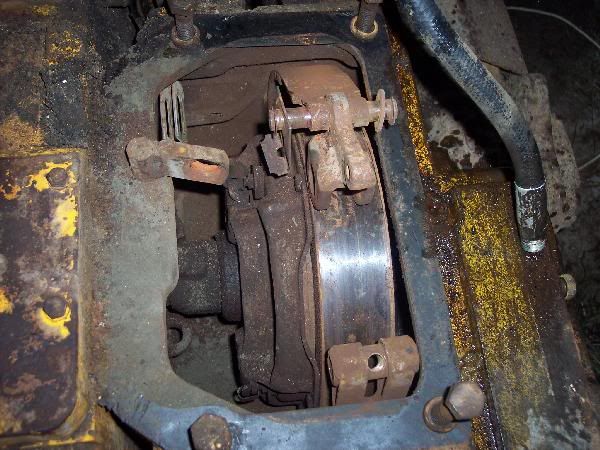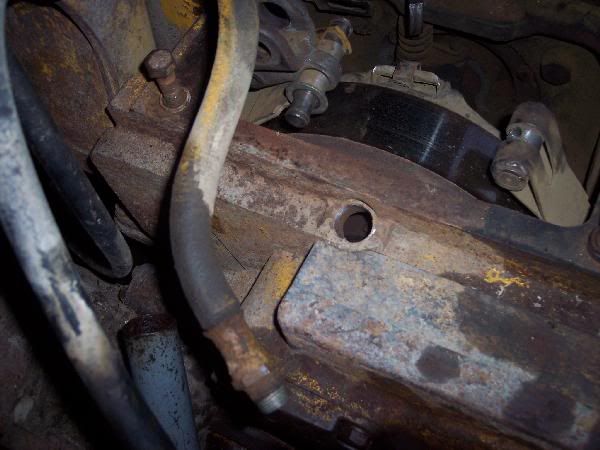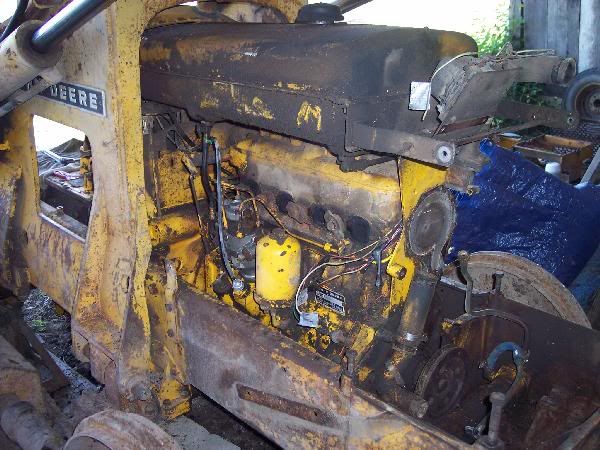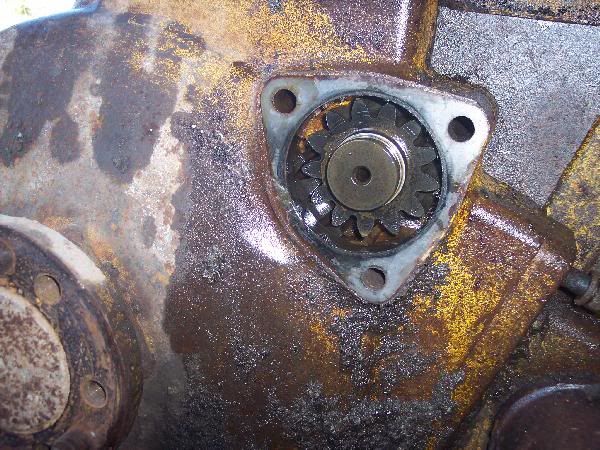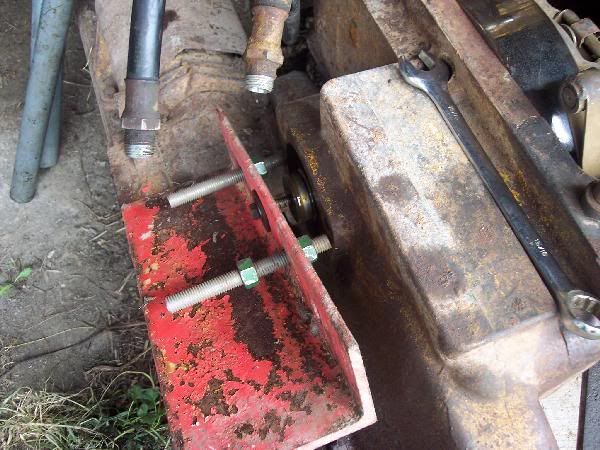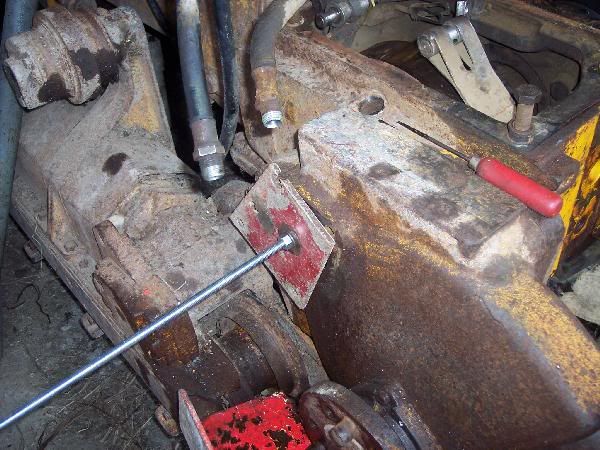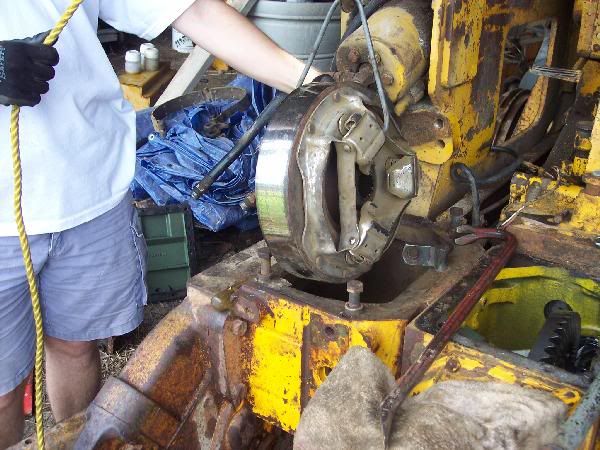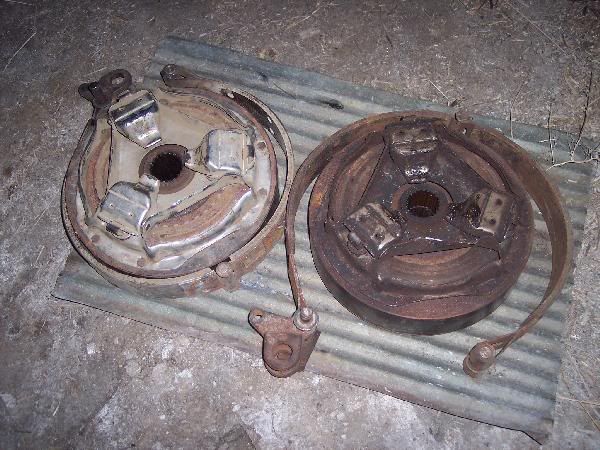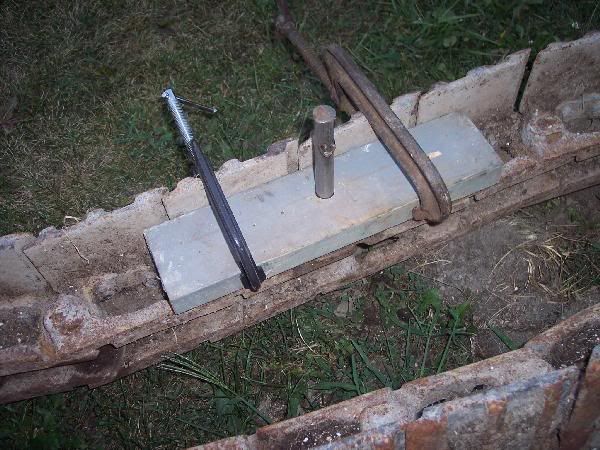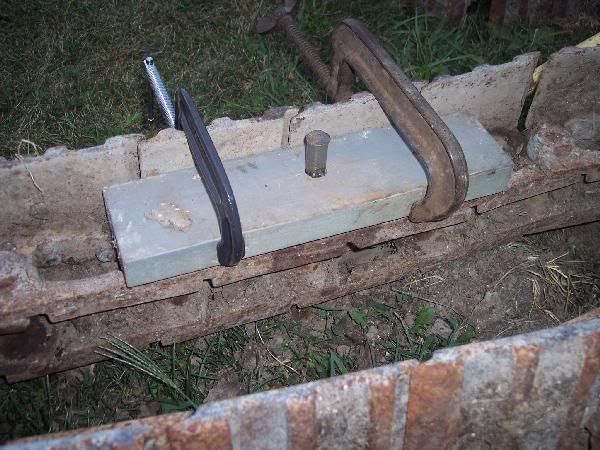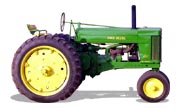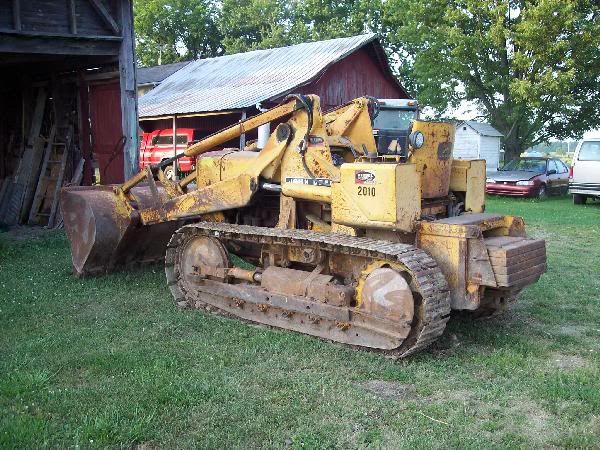
Wish me luck.
After having the dozer 3 years, I guess it eaned the steering clutch repair, tranny hyd leak fixed, and paint. I used a 10-ton portapower jack to push against the loader bucket and front wheel to loosen (squirt gease) the tracks. Only one side had the little steel ball in the grease port.
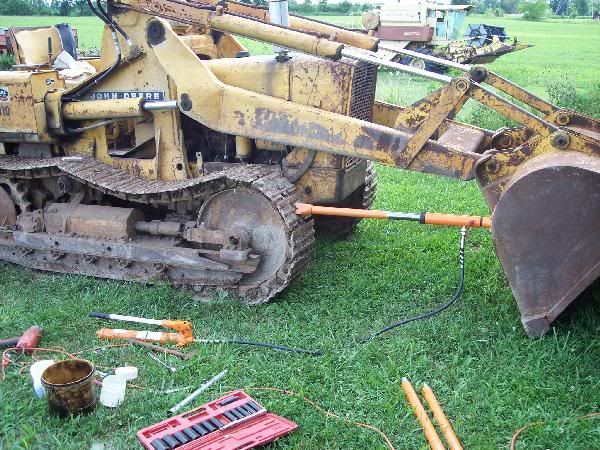
I tried to use a sledge hammer on the master pin, but unable to get a good swing. I derailed the tracks and pulled them off sideways. I used a CaseIH 7120 3 pt hitch to lift the ass off the ground and the dozer loader bucket to lift the front. I used a IH 1066 tractor and prybars to pull the tracks off sideways. With the CaseIH on the rear, I lifted and pushed the dozer in the barn with the front wheels rolling on planks.
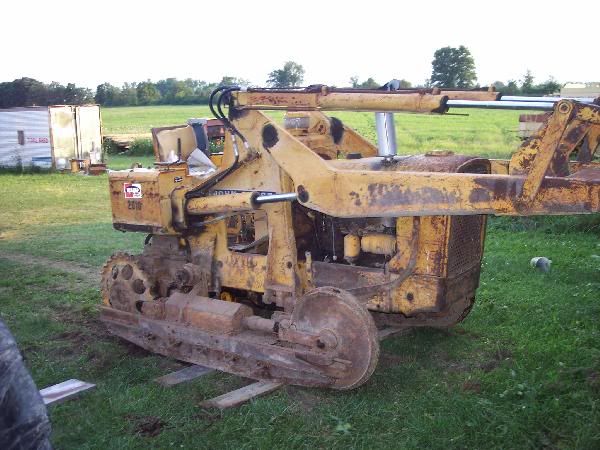
Now that the tracks are off, I laid them on their side and juiced up the masterpins with penetrating fluid. After about a week of that, I will C-clamp a 2X4 board with a hole directoy over the masterpin for the punch to fit. Then a good swing with the sledgehammer should pop them out. I did this trick two years ago and it worked great and safe.
I will continue this post as I progress. I am sure I will have questions as I go.
Mark


